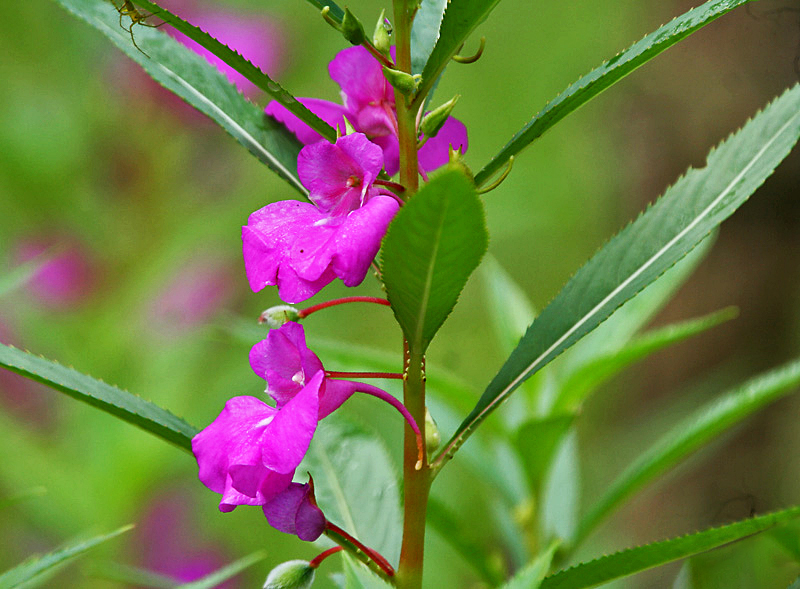|
Cyrilla
''Cyrilla racemiflora'', the sole species in the genus ''Cyrilla'', is a flowering plant in the family Cyrillaceae, native to warm temperate to tropical regions of the Americas, from the southeastern United States (coastal areas from southeastern Texas east to southeastern Virginia), south through the Caribbean, Mexico (Oaxaca only) and Central America to northern Brazil and Venezuela in South America. Common names include swamp cyrilla, swamp titi, palo colorado, red titi, black titi, white titi, leatherwood, ironwood, he-huckleberry, and myrtle. Habitat Can be found in rainforests, swamps, along streams, bogs, bayheads, backwaters, wet prairies, low pinelands, pocosins, flatwood depressions, preferring acidic, sandy, or peaty soils. Description In tropical rainforests, it is a large tree growing to or more tall and greater than in diameter, but only a shrub to tall in temperate regions at the northern edge of its range. It is most recognizable from its white flowers which ar ... [...More Info...] [...Related Items...] OR: [Wikipedia] [Google] [Baidu] |
Cyrillaceae
The Cyrillaceae are a small family of flowering plants in the order Ericales, native to warm temperate to tropical regions of the Americas. The family comprises two genera, '' Cliftonia'' and '' Cyrilla'', each containing a single species, ''Cliftonia monophylla'' and '' Cyrilla racemiflora''. However, additional species of ''Cyrilla'' are now often recognized and the genus is in need of taxonomic revision. In the past, many botanists included a third genus, '' Purdiaea'', in the family, though recent research has shown this genus is better placed in the closely related family Clethraceae. __TOC__ Fossil record Fossil ''Cyrilla'' and ''Cliftonia'' leaves, wood and pollen have been reported from the Neogene Lower Rhine region brown coal. Leaf fragments of ''Cyrilla'' have been found frequently in brown coals of central Europe. The Cyrillaceae formed part of the Tertiary bog flora where they constituted an important component of the shrubby vegetation. Among fossil ''Cyrilla'' fro ... [...More Info...] [...Related Items...] OR: [Wikipedia] [Google] [Baidu] |
Ericales
The Ericales are a large and diverse order of flowering plants in the asterid group of the eudicots. Well-known and economically important members of this order include tea and ornamental camellias, persimmon, ebony, blueberry, cranberry, lingonberry, huckleberry, kiwifruit, Brazil nut, argan, sapote, azaleas and rhododendrons, heather, heath, impatiens, phlox, Jacob's ladder, primroses, cyclamens, shea, sapodilla, pouterias, and trumpet pitchers. The order includes 22 families, according to the APG IV system of classification. The Ericales include trees, bushes, lianas, and herbaceous plants. Together with ordinary autophytic plants, they include chlorophyll-deficient mycoheterotrophic plants (e.g., '' Sarcodes sanguinea'') and carnivorous plants (e.g., genus '' Sarracenia''). Mycorrhizal associations are quite common among the order representatives, and three kinds of mycorrhiza are found exclusively among Ericales (namely, ericoid, arbutoid and monotro ... [...More Info...] [...Related Items...] OR: [Wikipedia] [Google] [Baidu] |
Carl Linnaeus
Carl Linnaeus (23 May 1707 – 10 January 1778), also known after ennoblement in 1761 as Carl von Linné,#Blunt, Blunt (2004), p. 171. was a Swedish biologist and physician who formalised binomial nomenclature, the modern system of naming organisms. He is known as the "father of modern Taxonomy (biology), taxonomy". Many of his writings were in Latin; his name is rendered in Latin as and, after his 1761 ennoblement, as . Linnaeus was the son of a curate and was born in Råshult, in the countryside of Småland, southern Sweden. He received most of his higher education at Uppsala University and began giving lectures in botany there in 1730. He lived abroad between 1735 and 1738, where he studied and also published the first edition of his ' in the Netherlands. He then returned to Sweden where he became professor of medicine and botany at Uppsala. In the 1740s, he was sent on several journeys through Sweden to find and classify plants and animals. In the 1750s and 1760s, he co ... [...More Info...] [...Related Items...] OR: [Wikipedia] [Google] [Baidu] |
Leaf
A leaf (: leaves) is a principal appendage of the plant stem, stem of a vascular plant, usually borne laterally above ground and specialized for photosynthesis. Leaves are collectively called foliage, as in "autumn foliage", while the leaves, stem, flower, and fruit collectively form the Shoot (botany), shoot system. In most leaves, the primary Photosynthesis, photosynthetic Tissue (biology), tissue is the palisade mesophyll and is located on the upper side of the blade or lamina of the leaf, but in some species, including the mature foliage of ''Eucalyptus'', palisade mesophyll is present on both sides and the leaves are said to be isobilateral. The leaf is an integral part of the stem system, and most leaves are flattened and have distinct upper (Glossary of botanical terms#adaxial, adaxial) and lower (Glossary of botanical terms#abaxial, abaxial) surfaces that differ in color, Trichome, hairiness, the number of stomata (pores that intake and output gases), the amount and ... [...More Info...] [...Related Items...] OR: [Wikipedia] [Google] [Baidu] |
Trees Of The Caribbean
In botany, a tree is a perennial plant with an elongated stem, or trunk, usually supporting branches and leaves. In some usages, the definition of a tree may be narrower, e.g., including only woody plants with secondary growth, only plants that are usable as lumber, or only plants above a specified height. But wider definitions include taller palms, tree ferns, bananas, and bamboos. Trees are not a monophyletic taxonomic group but consist of a wide variety of plant species that have independently evolved a trunk and branches as a way to tower above other plants to compete for sunlight. The majority of tree species are angiosperms or hardwoods; of the rest, many are gymnosperms or softwoods. Trees tend to be long-lived, some trees reaching several thousand years old. Trees evolved around 400 million years ago, and it is estimated that there are around three trillion mature trees in the world currently. A tree typically has many secondary branches supported clear of ... [...More Info...] [...Related Items...] OR: [Wikipedia] [Google] [Baidu] |
Cloud Forest Flora Of Mexico
In meteorology, a cloud is an aerosol consisting of a visible mass of miniature liquid droplets, ice crystals, frozen crystals, or other particulates, particles, suspended in the atmosphere of a planetary body or similar space. Water or various other chemicals may compose the droplets and crystals. On Earth, clouds are formed as a result of saturation of the air when it is cooled to its dew point, or when it gains sufficient moisture (usually in the form of water vapor) from an adjacent source to raise the dew point to the ambient temperature. Clouds are seen in the Earth's homosphere, which includes the troposphere, stratosphere, and mesosphere. Nephology is the science of clouds, which is undertaken in the cloud physics branch of meteorology. The World Meteorological Organization uses two methods of naming clouds in their respective layers of the homosphere, Latin and common name. Genus types in the troposphere, the atmospheric layer closest to Earth's surface, have Latin ... [...More Info...] [...Related Items...] OR: [Wikipedia] [Google] [Baidu] |
Monotypic Ericales Genera
In biology, a monotypic taxon is a taxonomic group (taxon) that contains only one immediately subordinate taxon. A monotypic species is one that does not include subspecies or smaller, infraspecific taxa. In the case of genera, the term "unispecific" or "monospecific" is sometimes preferred. In botanical nomenclature, a monotypic genus is a genus in the special case where a genus and a single species are simultaneously described. Theoretical implications Monotypic taxa present several important theoretical challenges in biological classification. One key issue is known as "Gregg's Paradox": if a single species is the only member of multiple hierarchical levels (for example, being the only species in its genus, which is the only genus in its family), then each level needs a distinct definition to maintain logical structure. Otherwise, the different taxonomic ranks become effectively identical, which creates problems for organizing biological diversity in a hierarchical system. ... [...More Info...] [...Related Items...] OR: [Wikipedia] [Google] [Baidu] |
Synonym (taxonomy)
In taxonomy, the scientific classification of living organisms, a synonym is an alternative scientific name for the accepted scientific name of a taxon. The Botanical nomenclature, botanical and Zoological nomenclature, zoological codes of nomenclature treat the concept of synonymy differently. * In nomenclature, botanical nomenclature, a synonym is a Binomial nomenclature, scientific name that applies to a taxon that now goes by a different scientific name. For example, Carl Linnaeus, Linnaeus was the first to give a scientific name (under the currently used system of scientific nomenclature) to the Norway spruce, which he called ''Pinus abies''. This name is no longer in use, so it is now a synonym of the current scientific name, ''Picea abies''. * In zoology, moving a species from one genus to another results in a different Binomial nomenclature, binomen, but the name is considered an alternative combination rather than a synonym. The concept of synonymy in zoology is reserved f ... [...More Info...] [...Related Items...] OR: [Wikipedia] [Google] [Baidu] |
Capsule (fruit)
In botany, a capsule is a type of simple, dry, though rarely fleshy dehiscent fruit produced by many species of angiosperms ( flowering plants). Origins and structure The capsule (Latin: ''capsula'', small box) is derived from a compound (multicarpellary) ovary. A capsule is a structure composed of two or more carpels. In (flowering plants), the term locule (or cell) is used to refer to a chamber within the fruit. Depending on the number of locules in the ovary, fruit can be classified as uni-locular (unilocular), bi-locular, tri-locular or multi-locular. The number of locules present in a gynoecium may be equal to or less than the number of carpels. The locules contain the ovules or seeds and are separated by septa. Dehiscence In most cases the capsule is dehiscent, i.e. at maturity, it splits apart (dehisces) to release the seeds within. A few capsules are indehiscent, for example those of '' Adansonia digitata'', '' Alphitonia'', and '' Merciera''. Capsules are often ... [...More Info...] [...Related Items...] OR: [Wikipedia] [Google] [Baidu] |
Fruit
In botany, a fruit is the seed-bearing structure in flowering plants (angiosperms) that is formed from the ovary after flowering. Fruits are the means by which angiosperms disseminate their seeds. Edible fruits in particular have long propagated using the movements of humans and other animals in a symbiotic relationship that is the means for seed dispersal for the one group and nutrition for the other; humans, and many other animals, have become dependent on fruits as a source of food. Consequently, fruits account for a substantial fraction of the world's agricultural output, and some (such as the apple and the pomegranate) have acquired extensive cultural and symbolic meanings. In common language and culinary usage, ''fruit'' normally means the seed-associated fleshy structures (or produce) of plants that typically are sweet (or sour) and edible in the raw state, such as apples, bananas, grapes, lemons, oranges, and strawberries. In botanical usage, the term ''fruit'' als ... [...More Info...] [...Related Items...] OR: [Wikipedia] [Google] [Baidu] |
Bract
In botany, a bract is a modified or specialized leaf, associated with a reproductive structure such as a flower, inflorescence axis or cone scale. Bracts are usually different from foliage leaves in size, color, shape or texture. They also look different from the parts of the flower, such as the petals or sepals. A plant having bracts is referred to as bracteate or bracteolate, while one that lacks them is referred to as ebracteate or ebracteolate. Variants Some bracts are brightly coloured which aid in the attraction of pollinators, either together with the perianth or instead of it. Examples of this type of bract include those of '' Euphorbia pulcherrima'' (poinsettia) and '' Bougainvillea'': both of these have large colourful bracts surrounding much smaller, less colourful flowers. In grasses, each floret (flower) is enclosed in a pair of papery bracts, called the lemma (lower bract) and palea (upper bract), while each spikelet (group of florets) has a further pair o ... [...More Info...] [...Related Items...] OR: [Wikipedia] [Google] [Baidu] |





